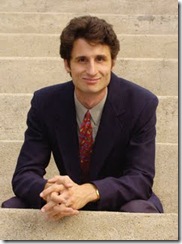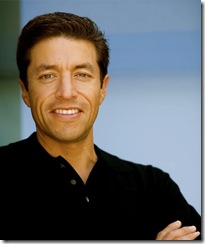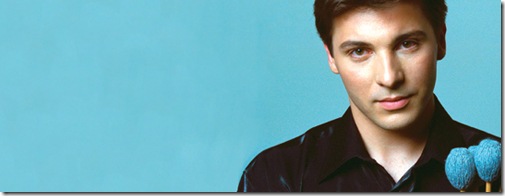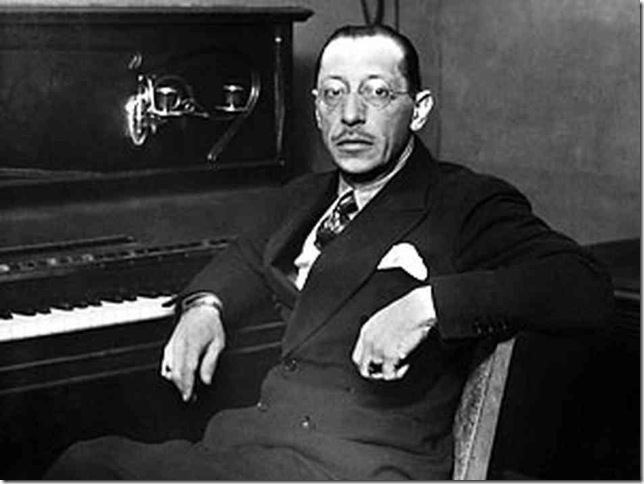By Donald Waxman
One hundred years ago this past May, in the elegant Theatre des Champs-Élysées in Paris, Pierre Monteux lifted his baton to begin the premiere of a new ballet score by the young Russian composer Igor Stravinsky.
Three years earlier, tout Paris had been captivated by the exoticisms and color of Stravinsky’s ballet The Firebird, and then a year later by his brilliantly orchestrated carnival scenes for the ballet Petrushka.
On that May evening in 1913, excitement ran high as a sophisticated Parisian audience settled down at the Champs-Élysées and awaited the opening bars of Stravinsky’s new ballet, The Rite of Spring (Le Sacre du Printemps). Advance notices of The Rite had described it as ballet depicting the sacrifice of a virgin maiden in pagan Russia.
The music began with an eerie, other-worldly sounding melody played by a solo bassoon at the top of its register, an instrumental baritone singing in falsetto. This gave way to an edgy orchestral rustling followed by an orchestral explosion. Heavy stomping chords constructed of eight different notes (polychords) were repeated incessantly, jolted by constantly shifting accents. This was followed by another rapid and discordant fortissimo movement in which high horn passages sounded like bleating elephants. An audience having expected the lush melodiousness of the finale of the Firebird or the catchy tunes of the Russian Dance in Petrushka was completely bewildered; and the clumsy, seemingly uncoordinated dancing onstage added to the chaos.
Soon, catcalls erupted, and countering the catcalls were cries of Taisez-vous! (shut up!) from those in the audience who were excited by the new sounds and rhythms. Fistfights broke out between the two factions; patrons threw program books at the orchestra players. The din in the hall was so great that Stravinsky had to leave his seat and stand in the wings of the stage to be able to hear his music.
After such a raucous premiere and the generally negative reviews that followed, one might not have expected much of a future for the Rite of Spring. In fact, Stravinsky’s score profoundly changed the course of music in the 20th century. Few composers born after 1913 would not be influenced by its radical rhythmic, harmonic and orchestral innovations.
This year, the musical world has been celebrating the centennial of the premiere of The Rite. All famous composers, and some not so famous, have their centennials and sesquicentennials of both birth and death dates, but a worldwide centennial for a single work of music is virtually unprecedented.
 Over the past year there have been hundreds of orchestral performances of The Rite her here and abroad. In South Florida, the New World Symphony gave a performance last spring, and though a little late, the Cleveland Orchestra will give a performance at the Arsht Center in January. On Nov. 2, Broward Community College in Davie honored the Stravinsky centennial in a unique way. As the star attraction on a program of entirely 20th– and 21st-century music there was a rare performance of The Rite in an arrangement for two pianos and percussion.
Over the past year there have been hundreds of orchestral performances of The Rite her here and abroad. In South Florida, the New World Symphony gave a performance last spring, and though a little late, the Cleveland Orchestra will give a performance at the Arsht Center in January. On Nov. 2, Broward Community College in Davie honored the Stravinsky centennial in a unique way. As the star attraction on a program of entirely 20th– and 21st-century music there was a rare performance of The Rite in an arrangement for two pianos and percussion.
The two-piano team consisted of Jure Rozman and Gustavo Romero. Rozman is a concert pianist, an associate professor of music at BCC and the imaginative planner of programs for the college’s concert series. Romero is a much-acclaimed concert pianist who has won many international awards, including first prize in the Clara Haskil Competition, one of the most elite and prestigious of international piano competitions. Romero teaches at the University of North Texas.
The Roman/Romero duo gave a commanding performance of a treacherously difficult score. For example, each pianist is often playing large four- and five-note chords in which the notes within the chords are rapidly changing in totally unconventional combinations. These would be difficult enough to execute in conventional meters; in The Rite, the number of beats within in a bar are often changing from one bar to the next.
These challenges are in addition to the basic demands of two-piano playing, synchronizing two instruments to sound like one. In their precision and in their sharpness and clarity of articulation, so necessary in all of Stravinsky’s music, theirs was an exceptional performance.
Adding to the novelty of a two-piano version of The Rite was the players’ decision to augment the ensemble with the entire percussion section of the original orchestral score. This was a risk, but a risk that made musical sense. In few other orchestral works is the percussion section as essential to the music as in The Rite.
In a movement such as The Ritual of Two Rival Tribes the bass motif played on multiple timpani is the bass line of the music. The team of five percussion players was in itself unusual. Its leader was Svet Stoyanov, the director of percussion studies at the University of Miami’s Frost School of Music, and an acclaimed percussion soloist, recording artist and a passionate advocate for new music. Stoyanov was in the center of the heavy percussion behind the two pianos, surrounded by his talented protégés, all of them performing in impressive synchronization with the two pianos.
The precision of entrances and articulation is especially demanding for percussion players. The margin for being off even a hair is merciless. Those demands were met with seeming ease by the exceptional team from UM’s Frost School, and their unique presence in combination with the two pianos made for a highly colorful and exciting performance of The Rite, a worthy contribution to the 2013 Centennial.
 If the performance at BCC is repeated, as it should be, the matter of balance between percussion and the two pianos would be worth adjusting. Even in the massive orchestra of The Rite (almost 100 players in the Paris premiere), timpani and bass drum at a fortissimo can be heard above all the instruments. Against two pianos they can, as happened occasionally, overpower the pair of keyboards.
If the performance at BCC is repeated, as it should be, the matter of balance between percussion and the two pianos would be worth adjusting. Even in the massive orchestra of The Rite (almost 100 players in the Paris premiere), timpani and bass drum at a fortissimo can be heard above all the instruments. Against two pianos they can, as happened occasionally, overpower the pair of keyboards.
In any transcription of an orchestral work for the keyboard, one will miss the color of the instruments. In that high bassoon solo that opens The Rite no piano can possibly imitate the strange, tight sound of the bassoon at the top of its register, nor in the final Sacrificial Dance movement can a piano quite duplicate the snarl of the trombone in its solo five-note figure.
If something is lost, though, something is gained. With the sheer volume and density of the orchestra thinned out in a keyboard transcription, certain figures become more sharply outlined, inner parts are heard for the first time and instrumental lines that are buried in the bass can surprise even the listener who has heard The Rite many times. A transcription as well played as the performance at BCC is like a color picture that has been reformatted into black and white. One misses the color, but in black and white many details often become much more sharply defined.
Two other arrangements for the same combination of two pianos and percussion were also on the program: Ravel’s orchestral Rapsodie Espagnole and his set of five miniatures for piano duet, the Mother Goose Suite (Ma Mere l’Oye). The use of percussion in these two transcriptions was not as successful as in The Rite, particularly in the Mother Goose Suite. It is true that two years after he composed the four-hand suite, Ravel arranged it for orchestra, and some of Ravel’s percussion effects in that orchestration, such as the xylophone and Chinese gong parts in the Pagodes movement, were used directly by the arranger of the piano and percussion version.
However, whereas those brief percussion entries in Ravel’s orchestrated suite are part of a meticulously planned orchestral texture, as part of the two piano arrangement they sounded superfluous. There are few French composers who are as fastidious in their compositions as Ravel. One alters his music at one’s peril.
The evening began with the rarely heard Concertino for Two Pianos by Dmitri Shostakovich, a work that Shostakovich wrote for his 15-year-old son Maxim when the talented young pianist was a student at the preparatory school of the Moscow Conservatory. One can imagine Maxim’s excitement in giving the premiere of this concertino, a gift from his father, the great Russian composer.
Years later, as a graduation present for Maxim, Shostakovich composed his Piano Concerto No. 2. Maxim would go on to become one of the Soviet Union’s most important conductors and a great exponent of his father’s music. All told, a very touching musical story of a famous father and his famous son.
The work in one movement begins with a grave, declamatory theme followed by the kind of quickstep march that Shostakovich loved to use in his lighter works. The same kind of fast march appears in the first movement of the Concerto No. 2, where it sounds like an identical twin. The Concertino has to be judged in the context of a student concerto, and in that context is ideal – short, brilliant and not too difficult to play. Compared with the two-piano version of The Rite, it must have been a romp for Rozman and Momero. They obviously enjoyed playing it, which they did with equal amounts of brio, polish and wit.
For those of us familiar with the composer’s symphonies, particularly the First, Fifth and Seventh, the Concertino, even allowing for its student concerto form, is disappointing. With its four-square rhythms and ultra-traditional harmonies, it is a work that could have been written 20 years before The Rite, much less 40 years afterward.Shostakovich’s First Symphony is far bolder, innovative and harmonically daring than the Concertino, and that symphony was composed by Shostakovich at the astounding age of 19.
However, for those in the audience who like their contemporary music tame, the Concertino was highly successful, and even for those of us who question its cotemporary relevance, we thank Romero and Rozman for having given us the opportunity to hear the work for the first time.
 After intermission yet another rarity work was presented, a set of two movements, Estudios de frontera, by the contemporary avant-garde Argentine composer Alejandro Vinao. He has written music in all genres but he is particularly well known for his music for percussion ensemble. The Estudios are scored for a large ensemble of five percussion players. The work is unusual in that the marimba is at the center of the ensemble, both physically and musically. The work might be labeled a concert piece for marimba accompanied by four percussion players.
After intermission yet another rarity work was presented, a set of two movements, Estudios de frontera, by the contemporary avant-garde Argentine composer Alejandro Vinao. He has written music in all genres but he is particularly well known for his music for percussion ensemble. The Estudios are scored for a large ensemble of five percussion players. The work is unusual in that the marimba is at the center of the ensemble, both physically and musically. The work might be labeled a concert piece for marimba accompanied by four percussion players.
Stoyanov was the lead marimbist, his four students alternating between a very large body of percussion instruments, including xylophone, vibraphone, glockenspiel, bells, bongos, tom-toms, cymbals, claves, even whistles. Also, there were two other marimbas besides the lead solo one, all three of them wedged together at odd angles.
A percussion ensemble is always fun to watch. With multiple players darting between a battery of instruments and hands with mallets weaving rapidly between vertical and horizontal instruments, a percussion performance seems part ballet, part music performance. However, from a musical standpoint, many compositions for percussion ensemble do not seem of high caliber. The use of multiple instruments can seem random and arbitrary, and often one cannot distinguish one percussion piece from the next.
With the Vinao pieces, however, a distinct personality emerged. He writes a very original and somewhat mysterious kind of music in which the many individual percussion instruments seem to be moving in orbits around a central sun, the solo marimba. Even as raucous an instrument as a whistle playing at widely spaced intervals entrances seemed an integral part of a carefully planned score.
As the lead player, Stoyanov was a model of precision. I know that the four-mallet technique — that is, two mallets squeezed into each fist— has been around a while, but it still continues to amaze. The dexterity needed to master this technique, as executed by a virtuoso like Stoyanov, should humble even the most brilliant of pianists. One had to be moved by the sight and sounds of a gifted player and teacher surrounded by his highly accomplished students, all performing together in a complex and intriguing new composition for massed percussion.
Even in New York or Boston, the program at the Bailey Hall would have seemed audacious. In South Florida, the land of the never-ending Chopin scherzo, the Liszt transcription and the all-Beethoven recital, such a program was nothing short of a musical miracle. Our thanks go out to all of the musicians who made it happen.
And now, if I may, a few sour notes:
Why were there no program notes? There were the usual bios of the performers. which of course there should be; but why no mention of The Rite centennial and no information about any of the compositions, especially the Vinao pieces? This omission of program notes seems to be endemic at South Florida solo and chamber music concerts. The reason usually given is lack of funds. How much though, can an extra fold of paper cost in the printing of a program booklet?
Secondly, why was there no reception after the concert? And by reception, I don’t mean a champagne and canapé affair (although that would be nice)? A reception only needs a comfortable, large enough space to meet and greet the musicians, and Bailey Hall has one of the most commodious foyers around, perfect for a post-concert reception. As it was, anyone wanting to see the musicians after the Saturday performance had to clamber onto the stage and back into the wings, where the musicians were already making a beeline for the exits.
After a fine concert the musicians deserve a reception, and a grateful audience deserves the opportunity to express their gratitude.
Donald Waxman is a composer based in Boca Raton and a contributing writer for Palm Beach ArtsPaper.
